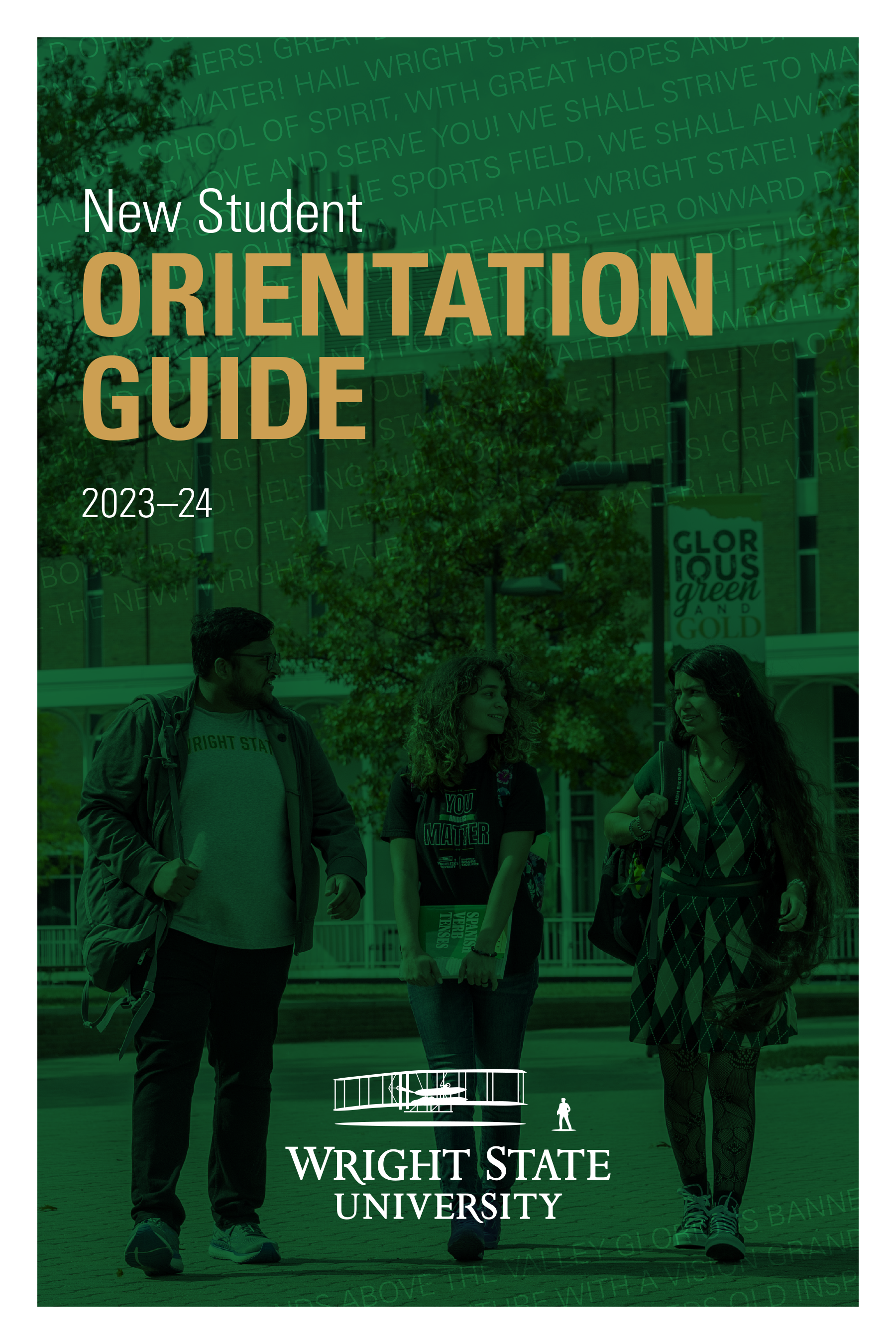We are your expert partner in promoting and communicating the programs, events, and initiatives of Wright State University. We learn your goals. We build a plan together. We get results on time and on budget.
Have a Question?
- General or Branding Question
- Photography Requests:
- Request a Photoshoot
- Browse and Buy Photos (SmugMug) — Personal purchases
- Order Existing Photos — For university use
- Social Media Question
- Website Issue or Question
Best Practices & Guides
Supporting Students with the New Student Orientation Guide
The New Student Orientation Guide is a valuable resource for new students as they navigate their first year at Wright State. It contains a summary of essential information, including important dates and deadlines, functions like academic advising and course registration, ways to get involved on campus, and much more.
Employees can use the guide as an aid in supporting students. It includes details about how to interact with departments and offices and how students can take advantage of resources (by visiting webpages, calling, emailing, chatting, or visiting in person).
Top 10 Tips for Writing for Email and Web
- Emphasize your primary call to action (CTA): Define what the reader should do after reading your message BEFORE writing.
- One message per communication: Do not piggyback your messages. Readers will not respond to your CTA if you confuse them.
- Always include one or more reader benefits to completing the desired action in the body copy.
- Be polite and positive: Use optimistic and communication-building language.
- Short and concise; email should be able to be read in its entirety in less than a minute. Try to stick to 50 to 100 words.
- Follow the Editorial Style Guide. Some guidelines include:
- Do not use WSU. There are too many universities with the abbreviation WSU.
- Do not capitalize any word unless it is the full proper noun, including major names, university, college, and committee names.
- Always include the area code in the phone number (937-775-####).
- For dates, use the month and a number without -st, -nd, -rd. If adding the year, put a comma before and after the year unless the year ends the sentence. Example: I was hired on December 21, 2018, but didn’t start until January 1, 2019.
- Keep a space between the number and the a.m. or p.m. If the a.m. or p.m. ends the sentence, do not add an extra period at the end. If the time given is on the hour, you may omit the “:00”. Example: The seminar started at 9 a.m. and ended at 4:30 p.m.
- Visit the Editorial Style Guide webpage and bookmark it for quick references.
- Do not confuse by providing multiple contacts—use one email address and one phone number.
- Accessibility, usability, searchability, spam:
- Do not use the phrase “click here.” This is not accessible for people with visual impairments. Instead, use “Visit the (name) website to …” The website name should be hyperlinked.
- Do not use colorful text. Stick with black and white.
- Do not use images or attachments in text-based email. If you must include an image or attachment (such as a flyer), be sure the information is repeated as text within the email body so it can be accessible to readers with visual impairments.
- Do not use red flag words in your subject line or content, including: free, guarantee, fast, 100%, congratulations, for you, income, limited time, marketing, now, opportunity, passwords, promise, unlimited, urgent, vacation.
- Write to your audience, not to your administrator. Think about the wants, needs, and hopes of your audience. Use language they are familiar with; avoid jargon and academic speak.
- Triple-check all dates, times, locations, and contact information.
Remember, you can and should have your work edited by at least one other individual. The Office of Marketing is a great resource if you need another set of eyes. There is no charge for this service. Proofreading and Editing Request



